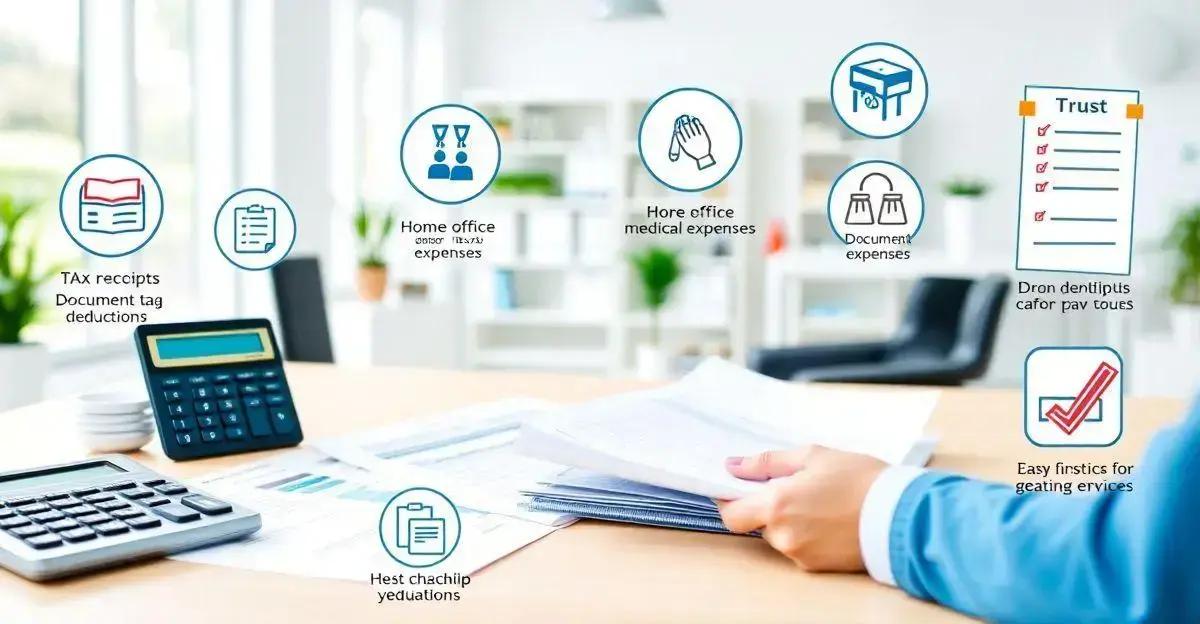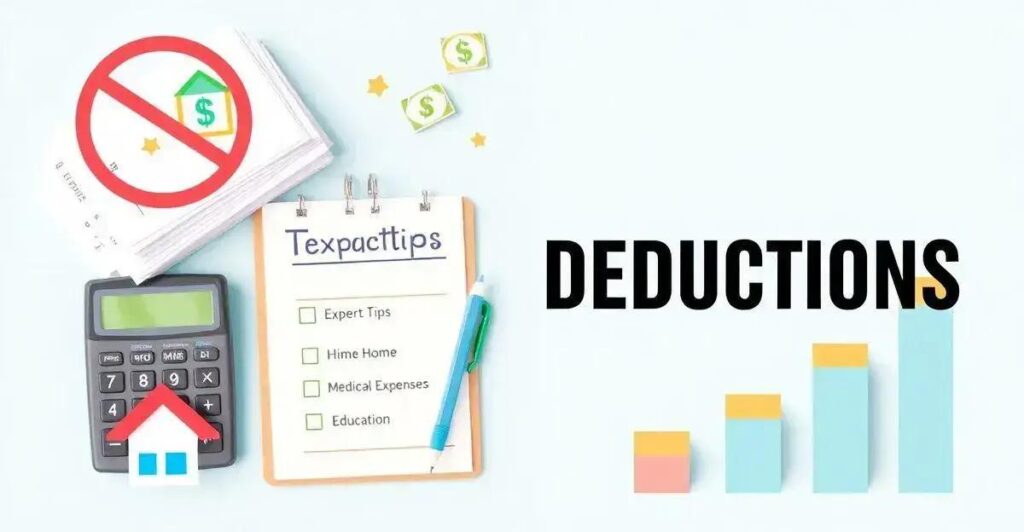Are you missing out on valuable tax deductions for your business? With the right guidance, you can unlock significant savings and optimize your financial strategy.
By understanding the ins and outs of tax deductions, you can make informed decisions that benefit your bottom line.
In this comprehensive guide, we’ll explore the key concepts, eligible expenses, and best practices for claiming tax deductions.
Follow along to learn how to maximize your tax savings and take your business to the next level.
Understanding Tax Deductions: A Beginner’s Guide
Tax deductions can be a complex and overwhelming topic, especially for those new to the world of business. But fear not, with this beginner’s guide, you’ll gain a solid understanding of the basics and be equipped to make informed decisions about your company’s finances. We’ll cover the fundamental concepts, including what tax deductions are, how to claim them, and common mistakes to avoid. By the end of this guide, you’ll be well on your way to maximizing your tax savings and optimizing your financial strategy.
Tax deductions are a valuable way to reduce your business’s taxable income and lower your tax liability. But not all expenses are eligible for deductions. In this section, we’ll explore the types of expenses that qualify, including those related to equipment, supplies, and travel. We’ll also provide guidance on how to properly document your expenses to ensure you receive the deductions you’re entitled to.
Proper documentation is key to claiming tax deductions. In this section, we’ll walk you through the process of documenting your expenses, including what documentation is required, how to keep accurate records, and how to prepare for an audit. By following these best practices, you’ll be able to confidently claim your deductions and avoid any potential issues with the IRS.
Claiming tax deductions can be a daunting task, especially if you’re unsure of the process. In this section, we’ll provide a step-by-step guide on how to claim your deductions, including how to complete Form 1040 and how to file your tax return. We’ll also offer tips on how to avoid common mistakes and how to ensure you receive the deductions you’re entitled to.
When it comes to claiming tax deductions, it’s easy to make mistakes that can cost you dearly. In this section, we’ll identify common mistakes to avoid, including failure to document expenses, claiming personal expenses, and not following IRS guidelines. By being aware of these potential pitfalls, you can take steps to avoid them and ensure you receive the deductions you’re entitled to.
Maximizing your tax deductions is an ongoing process that requires regular monitoring and optimization of your business’s financial strategy. In this section, we’ll provide tips and best practices on how to stay ahead of the game, including how to identify new opportunities for deductions, how to adjust your strategy as your business grows or changes, and how to prepare for future tax seasons.
Eligible Expenses for Tax Deductions

Eligible expenses for tax deductions include business-related costs such as equipment purchases, travel expenses, and supplies. It’s essential to keep accurate records of these expenses, as they can significantly impact your business’s taxable income. In this section, we’ll explore the various types of eligible expenses and provide guidance on how to properly document them.
Proper documentation is key to claiming tax deductions. In this section, we’ll walk you through the process of documenting your expenses, including what documentation is required, how to keep accurate records, and how to prepare for an audit. By following these best practices, you’ll be able to confidently claim your deductions and avoid any potential issues with the IRS.
Claiming tax deductions can be a daunting task, especially if you’re unsure of the process. In this section, we’ll provide a step-by-step guide on how to claim your deductions, including how to complete Form 1040 and how to file your tax return. We’ll also offer tips on how to avoid common mistakes and how to ensure you receive the deductions you’re entitled to.
When it comes to claiming tax deductions, it’s easy to make mistakes that can cost you dearly. In this section, we’ll identify common mistakes to avoid, including failure to document expenses, claiming personal expenses, and not following IRS guidelines. By being aware of these potential pitfalls, you can take steps to avoid them and ensure you receive the deductions you’re entitled to.
Maximizing your tax deductions is an ongoing process that requires regular monitoring and optimization of your business’s financial strategy. In this section, we’ll provide tips and best practices on how to stay ahead of the game, including how to identify new opportunities for deductions, how to adjust your strategy as your business grows or changes, and how to prepare for future tax seasons.
Documenting Your Tax Deductions
Accurate documentation is crucial when it comes to tax deductions. Without proper documentation, you risk not being able to claim the deductions you’re entitled to, or even facing an audit.
In this section, we’ll provide step-by-step guidance on how to document your tax deductions, including what documentation is required, how to keep accurate records, and how to prepare for an audit.
Common Pitfalls to Avoid
We’ll also cover common pitfalls to avoid, such as missing or incomplete records, and provide tips on how to stay organized and keep your records in order.
Claiming Tax Deductions on Your Return

Claiming tax deductions on your return requires careful attention to detail and a thorough understanding of the tax laws. In this section, we’ll walk you through the process of claiming tax deductions, including how to complete Form 1040, how to file your tax return, and how to ensure you receive the deductions you’re entitled to.
We’ll also provide tips on how to avoid common mistakes, such as missing or incomplete records, and how to stay organized and keep your records in order.
Common Mistakes to Avoid When Claiming Tax Deductions
When claiming tax deductions, it’s easy to make mistakes that can cost you dearly. In this section, we’ll identify common mistakes to avoid, including failure to document expenses, claiming personal expenses, and not following IRS guidelines.
We’ll also provide tips on how to stay organized and keep accurate records, and how to prepare for an audit. By being aware of these potential pitfalls, you can take steps to avoid them and ensure you receive the deductions you’re entitled to.
Maximizing Your Tax Deductions for Future Success

Maximizing your tax deductions is an ongoing process that requires regular monitoring and optimization of your business’s financial strategy.
In this section, we’ll provide tips and best practices on how to stay ahead of the game, including how to identify new opportunities for deductions, how to adjust your strategy as your business grows or changes, and how to prepare for future tax seasons.
By staying proactive and informed, you can ensure that you’re getting the most out of your tax deductions and setting your business up for long-term success.
FAQ – Frequently Asked Questions about Tax Deductions
What are eligible expenses for tax deductions?
Eligible expenses for tax deductions include business-related costs such as equipment purchases, travel expenses, and supplies.
How do I document my tax deductions?
Accurate documentation is crucial when it comes to tax deductions. You should keep records of your expenses, including receipts, invoices, and bank statements.
How do I claim my tax deductions on my return?
You can claim your tax deductions on your return by completing Form 1040 and listing your deductions on Schedule A.
What common mistakes should I avoid when claiming tax deductions?
Common mistakes to avoid when claiming tax deductions include failure to document expenses, claiming personal expenses, and not following IRS guidelines.
How can I maximize my tax deductions for future success?
Maximizing your tax deductions is an ongoing process that requires regular monitoring and optimization of your business’s financial strategy.



